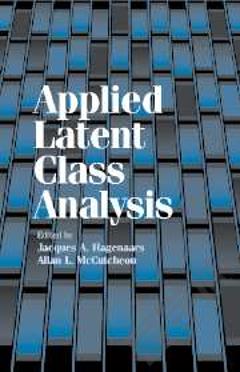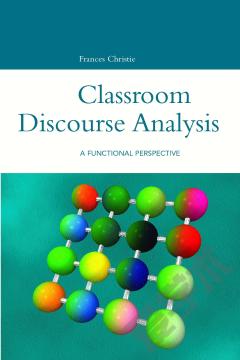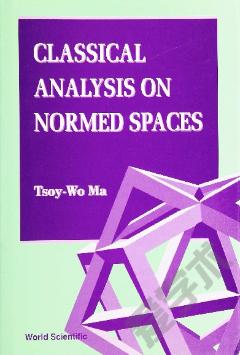Analyzing Classical Form —— An Approach for the Classroom
----- 古典形势解析:课堂方法
Chapter 1 A Review of Harmony The Basics Harmonic vocabulary Harmonic progressions Let's Practice More Details Tonic function Dominant function Pre-dominant function Prolongational progressions Cadential progressions Sequential progressions Finer Points Reviewing the Theory Examples for Analysis Part 1 Conventional Theme-Types Chapter 2 The Sentence The Basics Presentation phrase Continuation phrase Let's Practice More Details Basic idea Repetition of the basic idea Tonic prolongation Presentation phrase versus presentation function Continuation function Cadential function Continuation Finer Points "Real" versus "notated" measures Modulating sentence Reviewing the Theory Examples for Analysis Model Composition Chapter 3 The Period The Basics Antecedent phrase Consequent phrase Let's Practice More Details Basic idea Contrasting idea Weak cadential closure Return of the basic idea Strong cadential closure Boundary processes: lead-in, elision Finer Points Antecedent (and consequent) as "mini-sentence" Modulating period cadential strength Reinterpreted half cadence Sentence versus period Reviewing the Theory Examples for Analysis Model Composition Chapter 4 Hybrid Themes The Basics Hybrid types Let's Practice More Details Hybrid type: antecedent + continuation Hybrid type: antecedent + cadential Compound basic idea Hybrid type: compound basic idea + continuation Hybrid type: compound basic idea + consequent Finer Points Hybrid themes in relation to the sentence and period Appearances of the basic idea Phrase ambiguities Other "hybrid" possibilities Reviewing the Theory Examples for Analysis Model Composition Chapter 5 Phrase Deviations, Cadential Deviations, and Framing Functions The Basics Phrase deviations Cadential deviations Framing functions Let's Practice More Details Phrase deviations Cadential deviations Framing functions Finer Points Contrasting idea replaced by continuation phrase Codetta closes with cadence cadence of limited scope Boundary process: melodic overlap Reviewing the Theory Examples for Analysis Model Composition Chapter 6 Compound Themes The Basics Compound Period Compound Sentence Let's Practice More Details Compound Period Compound Sentence Finer Points Compound period Real vs. notated measures Reviewing the Theory Examples for Analysis Model Composition Chapter 7 The Small Ternary (Rounded Binary) The Basics Exposition (A) Contrasting middle (B) Recapitulation (A') Let's Practice More Details Tight-knit versus loose formal organization Exposition (A) Contrasting middle (B) Recapitulation (A') Finer Points Contrasting middle (B) Recapitulation (A') Reviewing the Theory Examples for Analysis Model Composition Chapter 8 The Small Binary The Basics Part 1 Part 2 Let's Practice More Details Part 1 Part 2 Reviewing the Theory Examples for Analysis Model Composition Part 2 Sonata Form Chapter 9 Sonata Form-An Overview Large-scale formal structure Large-scale tonal structure Exposition Let's Practice Development Let's Practice Recapitulation Let's Practice Chapter 10 Exposition (I)-Main Theme The Basics More Details Conventional theme-types Nonconventional theme-types Finer Points Main-theme group Character and affect Reviewing the Theory Examples for Analysis Chapter 11 Exposition (II)-Transition The Basics Let's Practice More Details Style, character, dynamics Boundary processes: accompanimental overlap, elision Modulation techniques Opening strategies Phrase-structural organization loosening devices Closure Finer Points Unusual opening strategies Two-part transition Omission of concluding function Reviewing the Theory Examples for Analysis Chapter 12 Exposition (III)-Subordinate Theme The Basics Let's Practice More Details Contrasting nature of the subordinate theme Looser sentential functions Internal half cadence (dominant arrival) Subordinate-theme group Closing section Finer Points Omission of initiating function Expanded periodic design Expanded repetition of a subordinate theme Harmonic-tonal loosening Thematic introduction Obscured boundary between transition and subordinate theme Reviewing the Theory Examples for Analysis Chapter 13 Development The Basics Tonal organization Phrase-structural organization Let's Practice More Details Melodic-motivic material Core Pre-core Retransition Finer Points Development sections without a core Transitional introduction Unusual endings Reviewing the Theory Examples for Analysis Chapter 14 Recapitulation The Basics An analytical methodology-comparison Tonal-harmonic organization Structural changes Let's Practice More Details Thematic functions of the recapitulation Structural changes: main theme Structural changes: transition Structural changes: subordinate theme (group) Finer Points Additional features of the recapitulation Fusion of main theme and transition Deviations from the norm Reviewing the Theory Examples for Analysis Chapter 15 Coda The Basics Let's Practice More Details Melodic-motivic material of the coda Start of the Coda Phrase structural organization of the coda Compensatory functions Reviewing the Theory Examples for Analysis Chapter 16 Slow Introduction The Basics Let's Practice More Details Style and affect Tonal, phrase-structural, and motivic organization Reviewing the Theory Examples for Analysis Part 3 Other Full-Movement Forms Chapter 17 Slow-Movement Forms The Basics Large Ternary Theme and Variations Sonata without development Let's Practice More Details Large ternary versus small ternary Large ternary-interior theme Large ternary-coda Theme and variations-structural alterations Finer Points Sonata form in slow movements Sonata without development-truncated recapitulation Ending a slow movement Reviewing the Theory Examples for Analysis Chapter 18 Minuet/Trio Form The Basics Minuet/trio form Minuet form Let's Practice More Details Exposition (A) Contrasting middle (B section) Recapitulation (A') Coda Trio Finer Points Binary minuet form Minuet/trio form-functional relations Reviewing the Theory Examples for Analysis Chapter 19 Rondo Forms The Basics Five-part rondo Sonata-rondo Let's Practice More Details Main theme Subordinate-theme complex Interior theme Returns of the main theme Development Coda Finer Points Deviations from the norm Enlargements of rondo form-seven-part rondo, nine-part sonata-rondo Reviewing the Theory Examples for Analysis Chapter 20 Concerto Form The Basics Opening ritornello Solo Exposition Subordinate-key ritornello Let's Practice More Details Opening ritornello Solo Exposition Subordinate-key ritornello Solo Development Solo Recapitulation Closing ritornello Reviewing the Theory Examples for Analysis Glossary of Terms Notes Index of Musical Compositions General Index
{{comment.content}}








 京公网安备 11010802027623号
京公网安备 11010802027623号